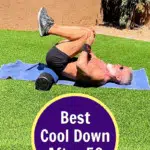Do your joints and muscles sometimes feel stiff? Foam rolling can help.
Foam rolling is a form of self-myofascial release – a technique that helps gently stretch and relax tight muscles.
Foam rolling can improve your range of motion, posture, circulation, flexibility, and joint mobility. It can also reduce muscle discomfort and enhance overall muscle function.
A joint is where two or more bones meet. From an ancestral perspective, joints are meant to be supple. See the video lower within this article for a specific foam rolling routine that will help keep your synovial fluid moving freely around your joints while also loosening up your muscles.
What is a Foam Roller?
A foam roller is a cylindrical tool made of dense foam that you can use to apply pressure to specific muscle groups.
It’s a particularly helpful tool for keeping your body supple, and – perhaps best of all – it’s lightweight, inexpensive, and easy to store at home.
How Do I Use a Foam Roller?
To use a foam roller effectively, place the roller on the floor and position the target muscle group on top of it.
Slowly roll back and forth, applying gentle pressure, for about 30-60 seconds per muscle group.
It’s important not to apply too much pressure, as this might cause bruising.
Why Is Foam Rolling So Helpful?
As modern humans become increasingly sedentary from texting, computing, and driving, the neck and hamstring muscles also require enhanced flexibility movements to unstick the tissues in these areas:
- The ball-and-socket joints of the shoulders and hips are where injuries commonly occur from exercise and the sensitive vertebrae of the lower back.
- Injuries aside, certain key exercises – such as pressing and squatting – can only be done effectively if there is already a certain level of mobility in the shoulders and hips.
Foam rolling benefits you because it releases tension in the fascia – the connective tissue that surrounds and supports your muscles, bones, and organs.
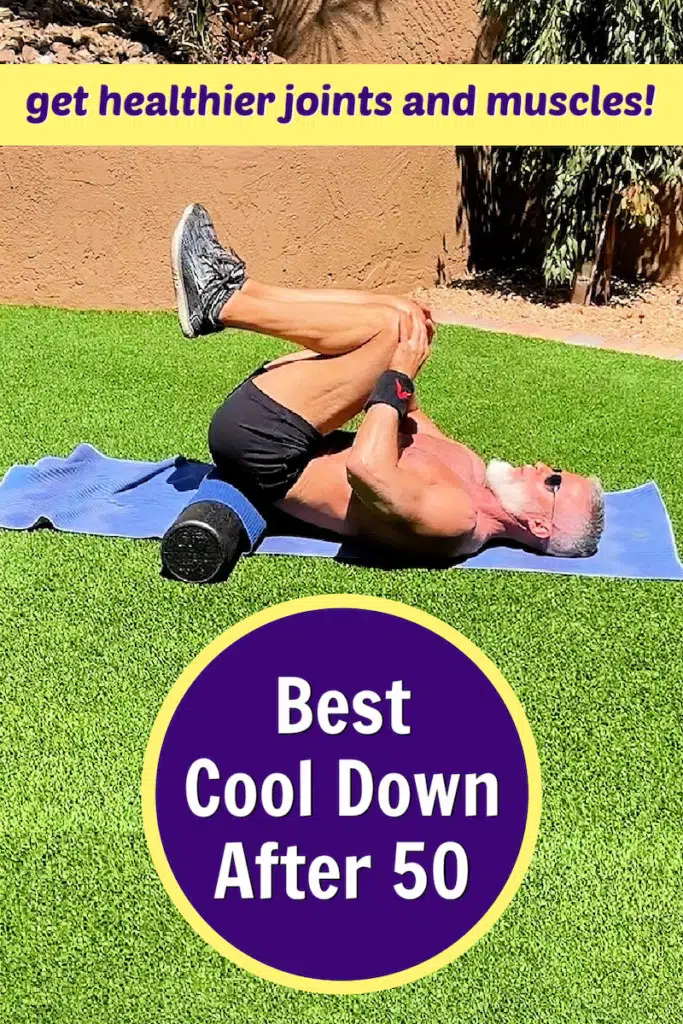
Fascia can become tight or restricted due to injury, inflammation, poor posture, or stress.
This leads to pain, stiffness, and reduced mobility. Fortunately, with foam rolling you can:
- Relieve muscle tightness: By applying pressure to tight muscles, foam rolling can help relax them and improve your overall flexibility.
- Increase blood flow: The pressure applied during foam rolling can increase blood circulation to the targeted muscle groups, which may help with recovery.
- Break-up adhesions: Foam rolling can help break up knots or adhesions in the muscles and connective tissues, which can contribute to better muscle function.
- Improve range of motion: By targeting specific muscle groups and relieving tightness, foam rolling helps improve the overall range of motion in various joints.
- Reduce muscle soreness: Foam rolling can be particularly helpful in reducing delayed onset muscle soreness (DOMS) after intense workouts.
Foam Rolling & Your Synovial Fluid
Your body produces a substance called synovial fluid to lubricate its joints.
Just as car engines have motor oil, your physique has synovial fluid within it so that your bones can move past one another effortlessly.
The more sedentary you are, the less your body thinks you need fluidity. If you don’t use it, you lose it – as the saying goes – and soon, your joints become sticky, abrasive, and at risk for injury the next time you move quickly, spontaneously, or under a weight-bearing load.
Foam rolling helps get your synovial fluid moving again.
Slouchy Posture? Try This Foam Rolling Routine for a Better Body
Our spines are meant to be long and bendy.
During pre-history, our ancestors did not sit in chairs.
On the other hand, modern life involves sitting for absurdly long periods, which can shorten spines.
A compressed spine means vertebrae are too close to one another, which can put undue pressure on spinal nerve endings resulting in slipped discs, extreme pain, or – at the very least – unattractive posture.
Here Are the Foam Rolling Moves for Enhanced Flexibility & Joint Health
This series of movements is designed to mitigate sticky synovial fluid and spinal compression – and restore joint and muscular mobility.
Refer to the video to see how each specific movement is executed.
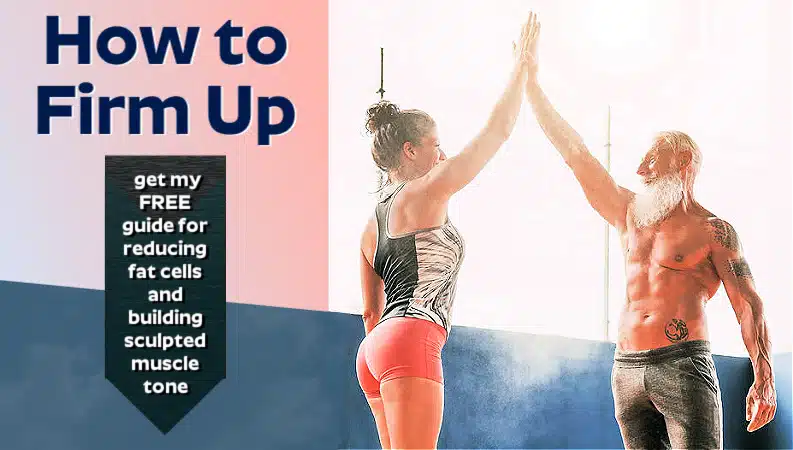
This cool-down is for both men and women. Modify the movement to accommodate your unique fitness level and limitations.
As always, consult your medical doctor before beginning any new movement regimen.
Cool-Down Movement Series with Supported Spine:
- Robot Arms
- Around the World
- Crunch and Hold
- Bird Wings
Foam Rolling Movement Series with Elevated Hips:
- Knee Circles
- Hip Flexor Stretch
- Helicopter
- Bridge
Cool-Down Reclined Series:
- Foot Rolls
- Point-and_flex
- Knee Hug
- Twist
- Human Ball
- Lower Back Stretch
- Hamstring Hug
- Happy Baby
- Adductor (Cobbler’s) Stretch
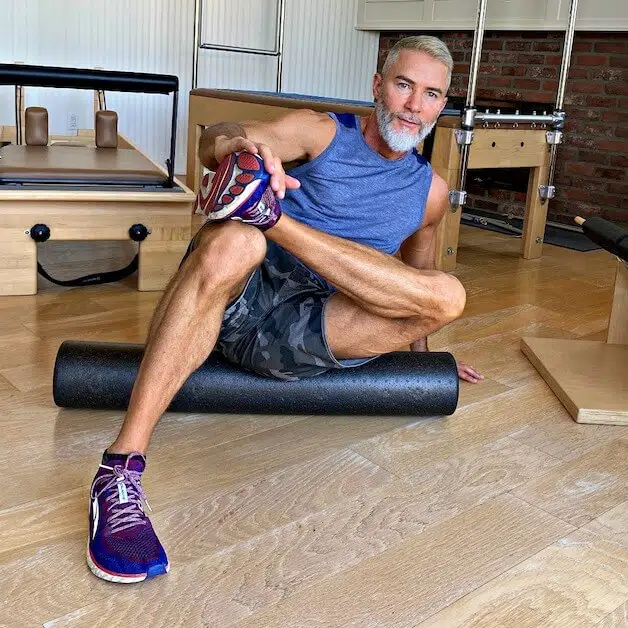
Sitting While Foam Rolling:
- Glute Roll
A glute roll involves crossing one leg, then leaning over to the side of that crossed leg, and foam rolling to massage out the side of your buttock and outer thigh.
When rolling, the idea is to try to relax the area you are targeting deeply:
- You’re looking for the sweet spot – where the muscle feels tight or uncomfortable.
- Then, you roll the area while taking slow deep breaths to loosen the tight fibers surrounding that particular place.
Science Behind the Foam Roller
Foam rolling has become a popular self-myofascial release technique over the past couple of decades. It’s often attributed to Canadian physiotherapist Sean Gallagher who began experimenting with using foam cylinders in the 1990s.
He found it to be an effective way to replicate the pressure and motion of manual therapy techniques used to release myofascial tension.
Gallagher worked with a company to develop the first commercial foam rollers in the early 2000s marketed specifically for triggering point release.
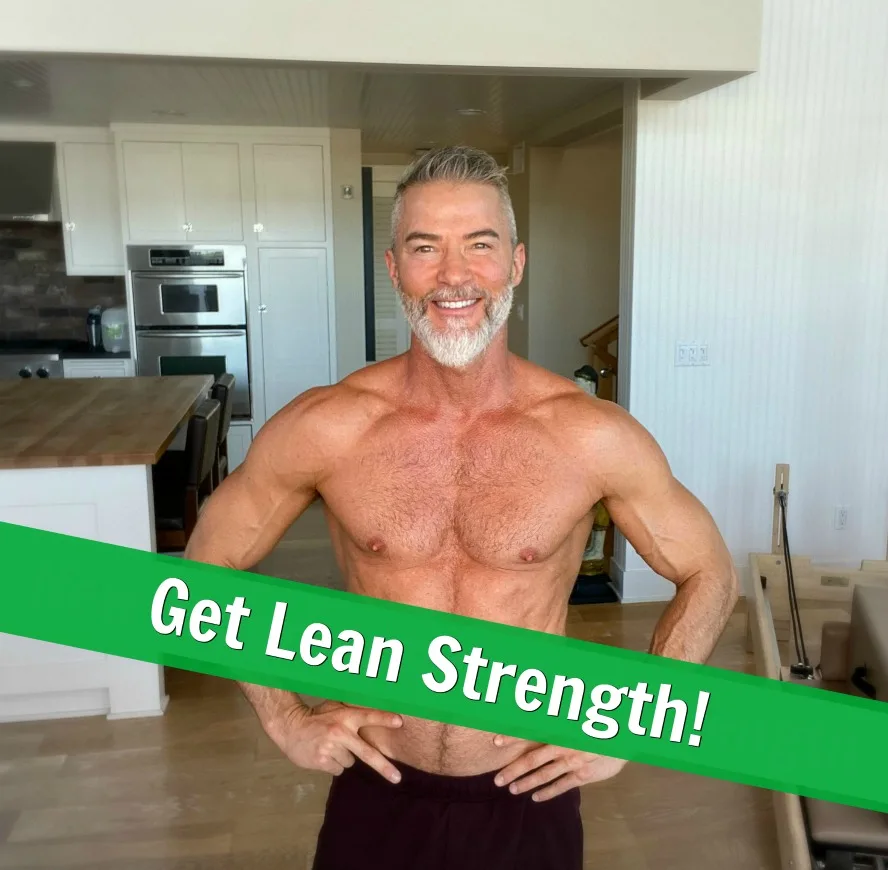
Foam rolling began growing in popularity in the 2000s among athletes and trainers as a method of self-massage to aid muscle recovery, flexibility, and soreness.
Its popularity boomed in the 2010s as the fitness industry began heavily marketing foam rollers to consumers as must-have gear for exercise, injury prevention, and myofascial release. Retail sales grew over 500% from 2013 to 2018.
Research on foam rolling has shown it can effectively increase short-term flexibility and range of motion. For example, in a study comparing the effects of foam rolling and stretching on physical performance, it was found that foam rolling had a more significant potential to increase performance than stretching.
You Can Also Use the Foam Roller During Your Cool Down
A cool-down is lower-intensity exercise – such as stretches or mobility drills – performed directly after a vigorous training session.
Foam rolling can cool down your joints and muscles and is a winning idea for reducing your risk of injury and improving your mobility and posture.
“…the cool-down is not just about the immune system or about glycogen restoration, it’s about leaving the workout in the right frame of mind and body. Right after intense training is a good time to reflect on the workout, as well as see how the body is operating after an intense session.”
–Carl Valle, Certified Strength & Conditioning Specialist
A good cool-down can accelerate blood lactate recovery while helping reduce depression in your immune system and promoting speedy recovery for your respiratory and cardiovascular systems.
Also, when your muscles are pumped full of warm blood and oxygen directly after a workout, it’s the perfect time to improve muscular flexibility and joint mobility.
With each passing year, doing a cool-down properly after exercise becomes even more important.
Foam Rolling Precautions
Foam rolling is generally safe for most people, but if you have any specific concerns or underlying health conditions, it’s always best to consult with a physiotherapist or healthcare provider before starting a new exercise routine.
Myofascial release should be performed with caution in certain cases, such as in areas of acute inflammation, open wounds, or in individuals with certain medical conditions like blood clotting disorders or advanced osteoporosis.
Conclusion on Using the Foam Roller to Unlock Flexibility & Reduce Muscle Tension
Today, the foam roller is generally seen as a helpful supplemental training tool for flexibility and circulation. Many athletes find foam rolling helpful during their post-workout cool-down. However, foam rolling can also be helpful before and during a workout.
Since most people in developed countries today lack flexibility and mobility in their spine, joints, and muscles, foam rolling as a regular part of your exercise program would likely be beneficial to you.
Additional Sources to Boost Your Mobility:
Narrative Review of Cool-Down Effects – https://link.springer.com/article/10.1007/s40279-018-0916-2
Research of Cooling Down Benefits – https://www.ncbi.nlm.nih.gov
Scientific Validation of Cool-Downs – https://simplifaster.com/articles/cool-down-exercise/
More Cool-Down Ideas – https://www.mayoclinic.org/healthy-lifestyle/fitness/in-depth/exercise/art-20045517
